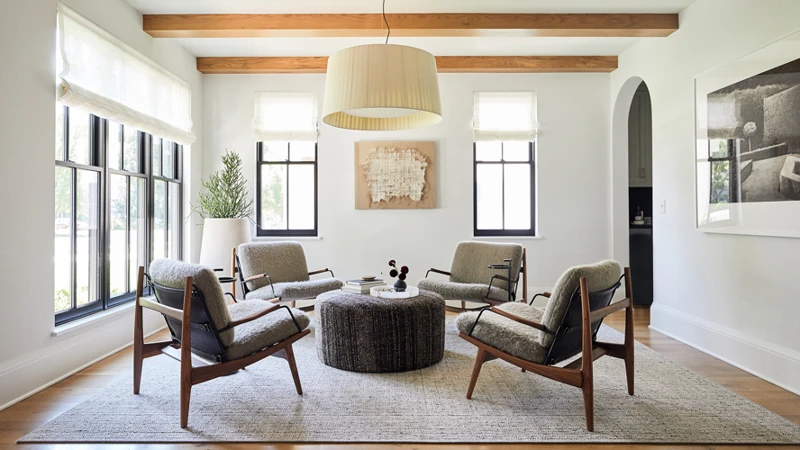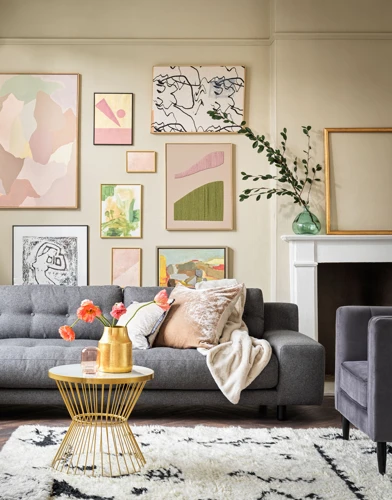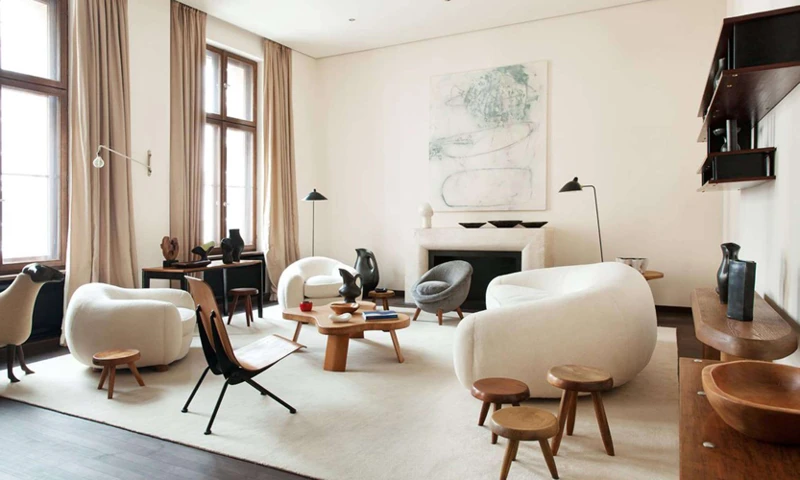The appeal of a neutral color scheme room lies in its versatility and timeless elegance. A well-designed space with a neutral palette can be both calming and sophisticated, offering a canvas that allows for personal expression through decor and accessories.
The Allure of Neutral Colored Rooms
Neutral colored rooms have a unique charm, providing a serene backdrop that’s easy on the eyes. These spaces can promote relaxation and serve as a retreat from the vibrant chaos of the outside world. The subtle tones also make the room feel larger and more open, enhancing the sense of spaciousness.
Defining a Neutral Color Palette
A neutral palette typically includes shades of white, gray, beige, and sometimes muted browns. These hues create a harmonious environment, serving as a foundation that supports a variety of design styles. The key to a successful neutral color scheme room is to use these colors in a way that adds interest and depth.
Mastering Accented Neutral Color Scheme Interior Design
Introducing an accented neutral color scheme interior design can elevate a space from simple to chic. This approach maintains the room’s tranquil atmosphere while infusing it with character and warmth.
Accenting Neutrals with Strategic Color Splashes
One method to breathe life into neutral interiors is by adding strategic splashes of color. These can come from a range of elements, including artwork, throw pillows, or a statement furniture piece. The key is to choose colors that complement the neutral tones, creating a sense of balance.
Choosing the Right Accents for a Harmonious Design
To ensure the accents enhance rather than overwhelm the room, select colors that have a similar undertone to the existing neutral hues. For instance, if your neutral base has warm undertones, opt for warm-colored accents. This creates a cohesive and inviting space.
Adding Pops of Color to a Neutral Room
Adding pops of color to a neutral room can be a delightful way to personalize and energize your space. The trick lies in finding the perfect balance between subtlety and boldness.
Strategies for Introducing Color in Neutral Settings
- Utilize colorful accessories like vases, books, or candles.
- Incorporate plants for a natural touch of greenery.
- Introduce textured fabrics in accent hues for added depth.
Neutral Bedroom with Pop of Color: A Case Study
Consider a neutral bedroom with a pop of color, such as a vibrant throw blanket or a piece of art with a burst of blue. These elements can transform the energy of the space, making it more inviting and personalized.
How to Add Color to a Neutral Living Room
When wondering how to add color to a neutral living room, it’s essential to consider the room’s function and the mood you want to evoke. Here are some ideas to get you started.
Selecting Color Accents for Living Spaces
Choose accents that reflect your personality or the ambiance you aim to create. For a tranquil setting, opt for soft blues or greens. For a more vibrant area, bold reds or oranges can make a statement.
Neutral Room with Pops of Color: Visual Dynamics
A neutral room with pops of color gains visual interest through contrast and variation. Place colorful cushions against a beige sofa or hang vivid artwork on a pale wall to draw the eye and add dimension.
Exploring Different Shades of Neutral
Neutral doesn’t have to mean monotonous. There’s a wide array of different shades of neutral, each bringing its own nuance and style to a room.
The Spectrum of Neutral Tones
The spectrum ranges from the lightest ivories to the deepest charcoals. Understanding this range can help you layer various neutral shades to achieve a rich and inviting interior.
Combining Various Neutral Hues for Depth
Layering light and dark neutral tones can give depth to a space. Imagine a room with creamy walls, a dove gray sofa, and rich taupe accents. The interplay of these shades creates a sophisticated and multi-dimensional aesthetic.
How to Mix Neutral Colors
Learning how to mix neutral colors is key to designing a space that feels cohesive and thoughtfully curated. It’s about finding the right balance and blending hues that complement each other.
Mixing Techniques for a Cohesive Look
Start with a base color and gradually add layers of lighter and darker neutrals. Consider the underlying tones of each color, ensuring they harmonize with one another. This approach can tie the entire room together seamlessly.
Blending Different Textures within a Neutral Palette
Introduce a variety of textures to keep a neutral scheme from feeling flat. Mix materials such as soft wool, rough linen, and smooth leather to add tactile interest and subtle visual warmth to the room.
Working with Solid Neutral Colors
Solid neutral colors have the power to create a bold statement in a subtle way. They serve as a grounding force in a room’s design and can be the key to a polished, finished look.
Creating Impact with Solid Colors
Large pieces of furniture or area rugs in solid neutral colors can anchor a space and make it feel more grounded. These elements become the framework for the rest of the room’s design.
When it comes to home decor, mastering the art of layering can transform a simple neutral colored room into a sophisticated and inviting space. If you’re looking to add a bit more flair to your interiors, exploring different color schemes and design techniques could be your next step. Discover how to make smaller spaces pop with our guide on color combinations for small rooms. For those interested in a bolder approach, our article on color blocking in room design can provide you with creative ways to incorporate vibrant hues into your home. Lastly, if you’re considering a cooler palette, take a look at our ideas on cool color schemes for the bedroom to create a tranquil retreat. With these resources, you’ll be well-equipped to enhance your neutral spaces with style and personality.
Keeping It Simple: The Elegance of Solids
There’s a refined elegance in simplicity. Solid neutral colors can convey a sense of calm and order, making a room feel elegant and intentionally designed. They allow for flexibility in accessorizing, ensuring the space can evolve with your tastes.
In conclusion, whether you’re working with a neutral bedroom with a pop of color or aiming to add color to a neutral living room, the beauty of neutral colored rooms is their adaptability. From the subtle interplay of different shades of neutral to the strategic use of solid neutral colors, these techniques allow for personal expression while maintaining a cohesive and serene environment. By mastering the nuances of neutral color layering, you can create a space that is both tranquil and vibrant, perfectly attuned to your unique aesthetic.


